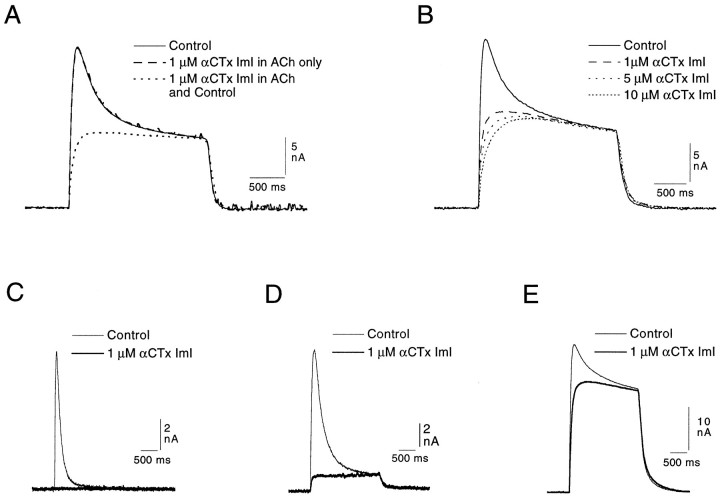Fig. 2.
Selective elimination by αCTx ImI of the rapidly desensitizing Cl-dependent response in identified neurons of the buccal and pleural ganglia (see Materials and Methods). A, αCTx ImI (1 μm) included in the ACh tube had no effect on the response (compare response presented as a solid line with that presented as an enhanced dashed line). The same concentration of αCTx ImI added to the control tube (hence bathing the cell before the ACh application), however, selectively blocked the desensitizing element of the response.B, In another cell of the same type, increasing concentrations of αCTx ImI failed to significantly alter the sustained element of the Cl-dependent response to 250 μmACh applied at 1 min intervals (records in toxin taken after a 4 min exposure to each concentration). C, In a neuron (posterior cell from the pleural ganglion; Kehoe, 1972a), which shows only the rapidly desensitizing element of the Cl-dependent response, 1 μm αCTx ImI completely blocks the response to 200 μm ACh. D, E, Selective block by 1 μm αCTx ImI of the rapidly desensitizing element of the response of two identified neurons of the buccal ganglion (B10 and B3, respectively) to 200 μm ACh. The two cells show different, characteristic proportions of the rapidly desensitizing and the sustained elements.

